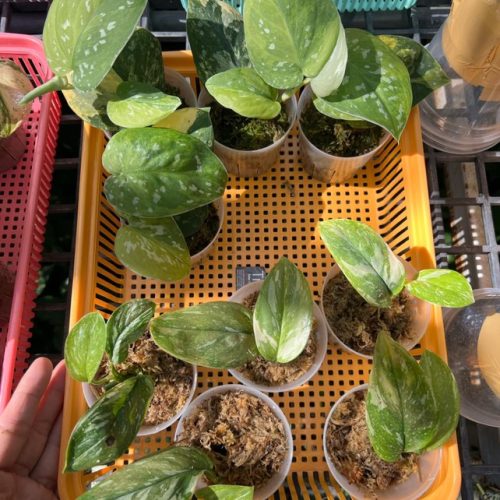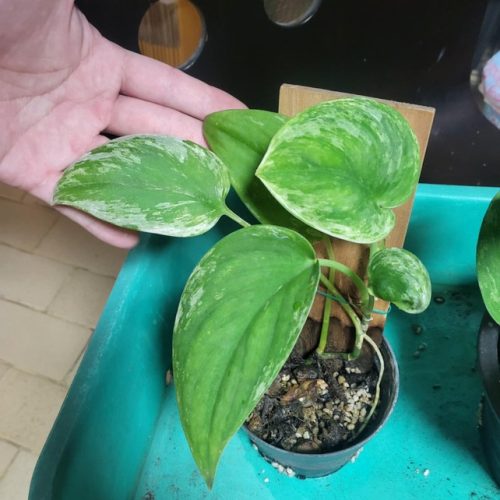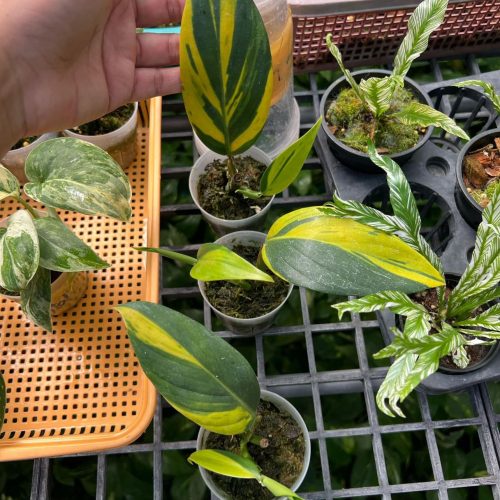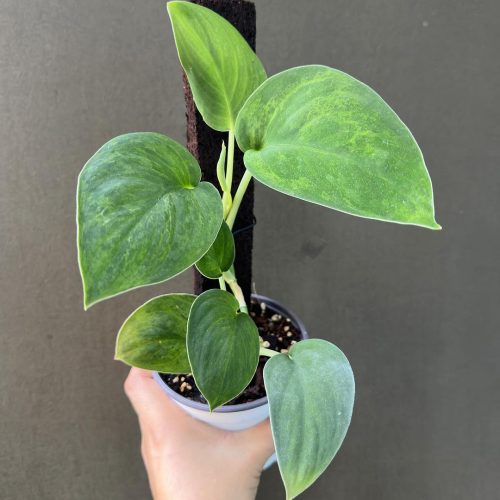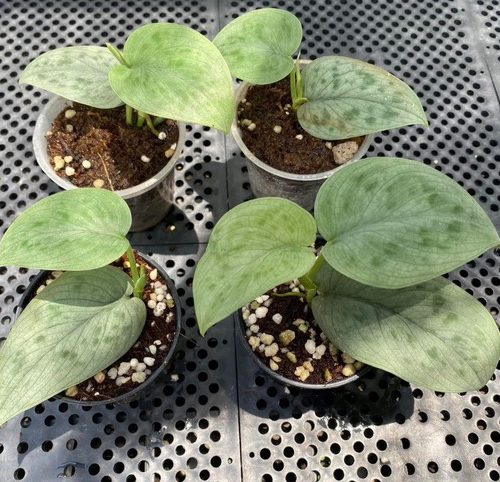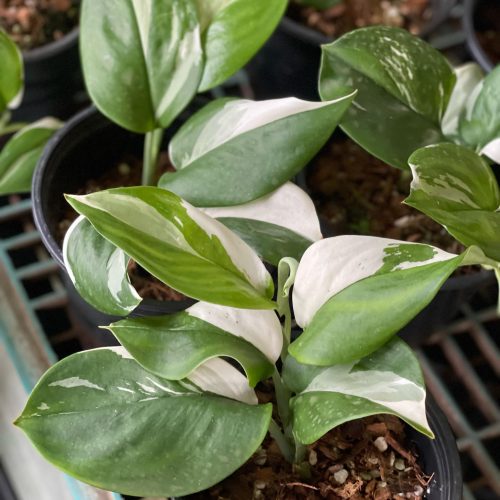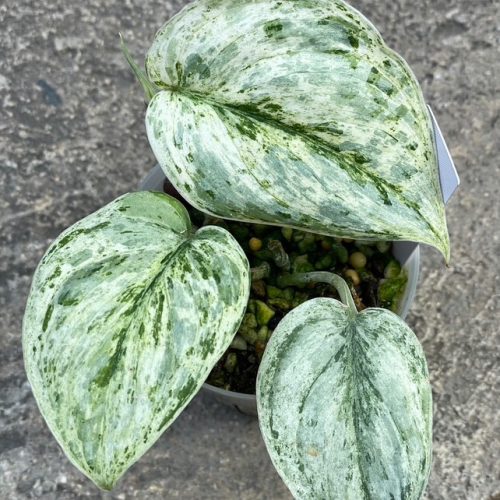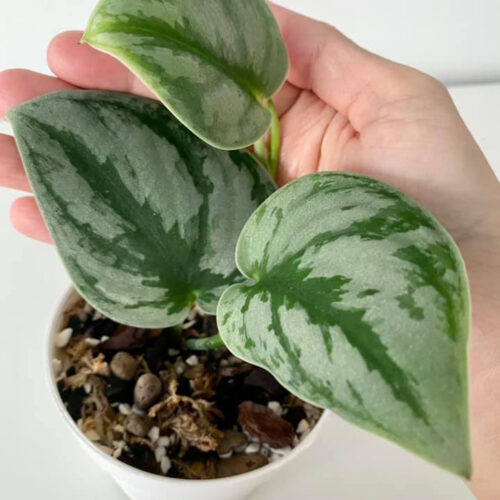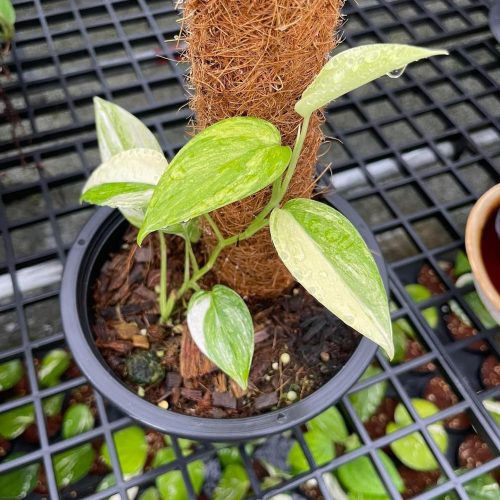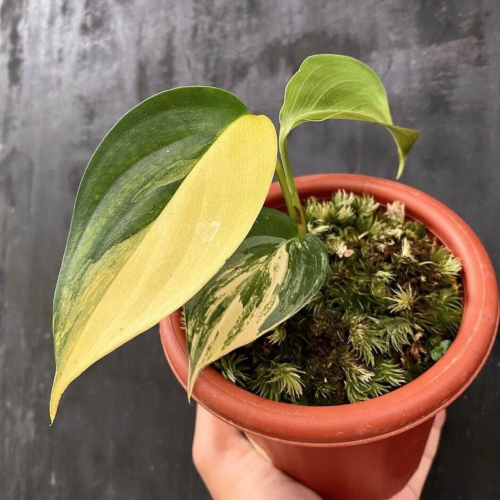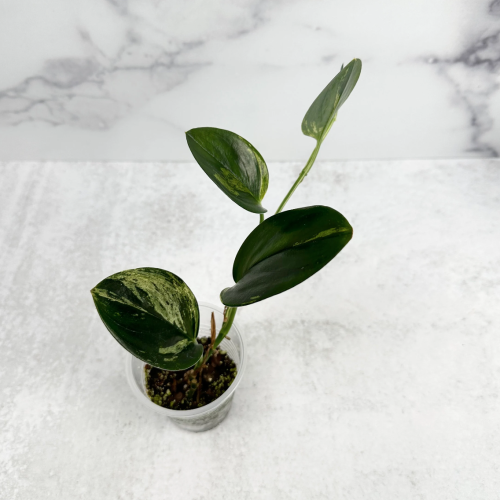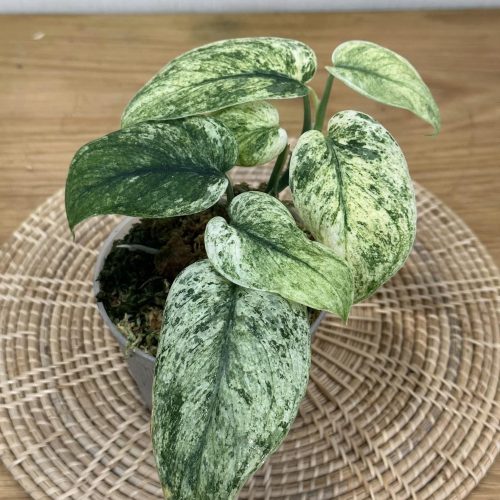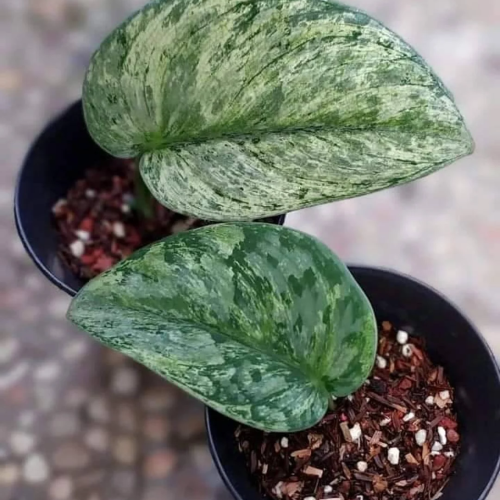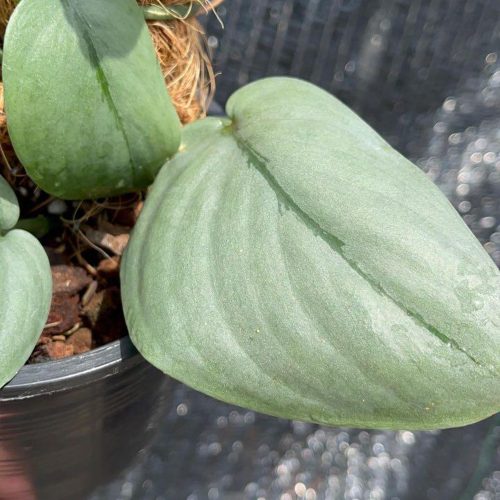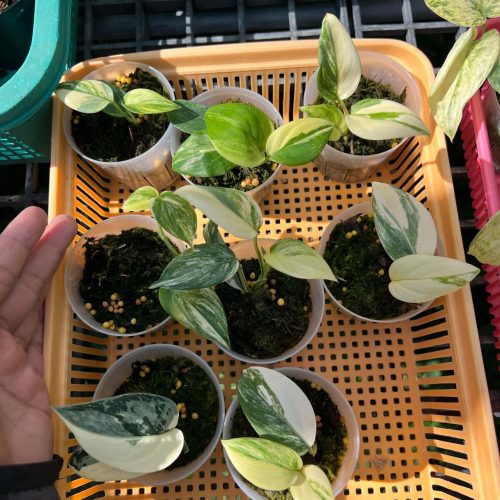The Scindapsus mint, also known as the satin pothos, is a gorgeous houseplant known for its silvery green foliage. This vining plant has heart-shaped leaves that shine as if they were coated in wax. With proper care, the satin pothos grows long trailing stems that cascade beautifully over the edges of shelves, hanging baskets, and tabletops.
If you’d like to brighten up your home or office with this eye-catching houseplant, follow these five tips for growing a lush and healthy satin pothos.
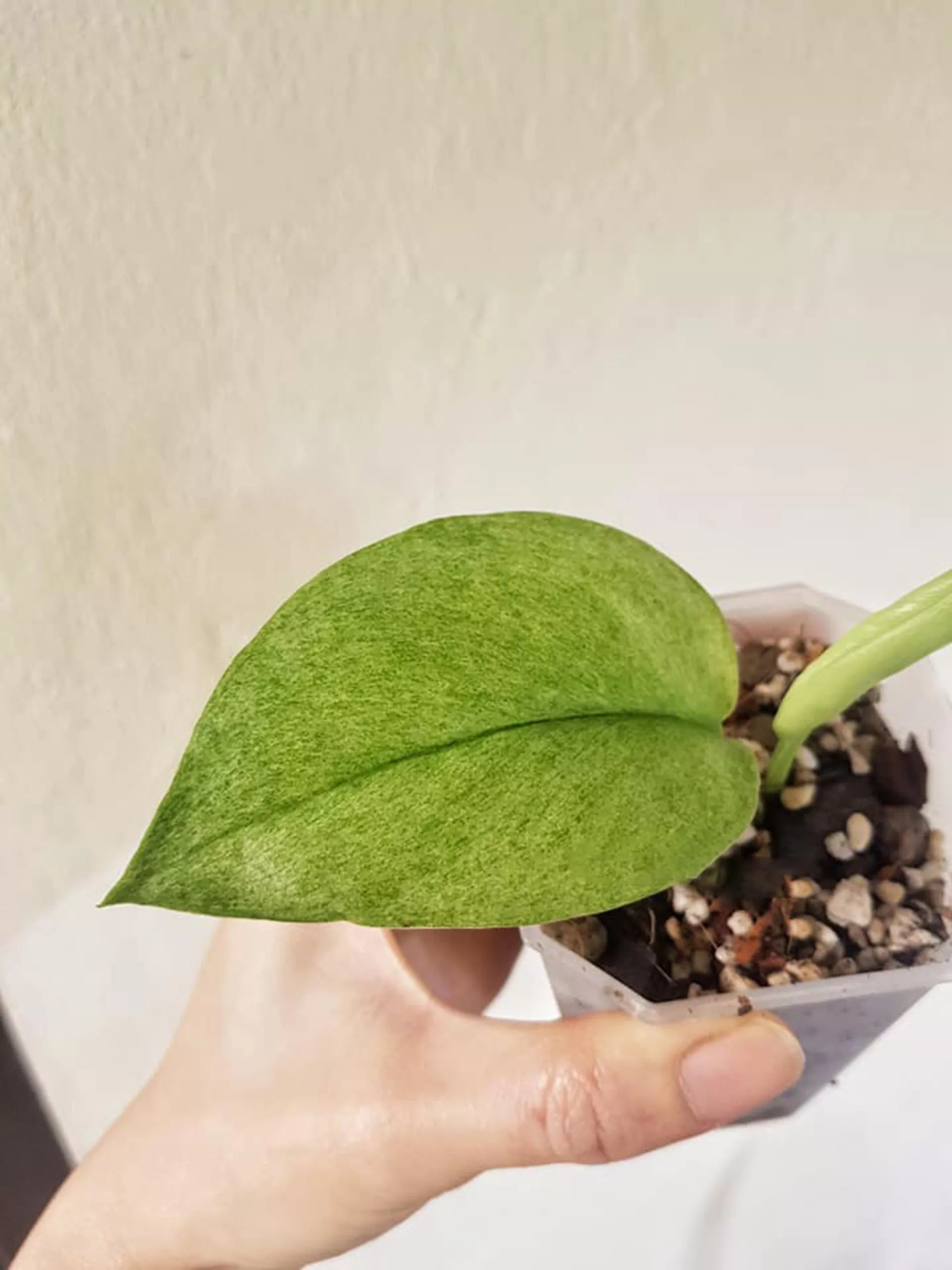
Choose a Bright Location
Light Requirements
As a variegated plant, the Scindapsus mint needs good lighting to maintain its colorful foliage. Place this plant in a spot that receives plenty of bright, indirect light. East or west-facing windows are ideal locations.
While the satin pothos can tolerate low light conditions, the leaves will fade and lose their gorgeous shine and silver markings without enough sun exposure. Insufficient light leads to sparse, dull growth.
Avoid Direct Sunlight
Although it thrives in brightly lit rooms, direct hot sunlight will scorch the fragile leaves of Scindapsus mint. Position the trailing vines out of the path of intense afternoon sun streaming through south-facing windows. Filtered light through sheer curtains is perfect for this houseplant.
Use a Well-Draining Potting Mix
Aerate Dense Soil
Satin pothos plants thrive when grown in loose, well-draining soil that allows oxygen to easily reach the roots. Use a potting mix made specifically for indoor houseplants, and amend it with perlite or pumice to prevent dense clumps of soil that retain too much moisture after watering.
Wet soggy soil will cause root rot and other harmful plant diseases. The roots of the Scindapsus mint need plenty of air pockets between soil particles to breathe and stay healthy.
For specific guidance on the ideal soil composition for Scindapsus plants, refer to “Scindapsus 101: A Beginner’s Guide to Understanding and Growing“. This document provides detailed information on soil requirements for optimal growth.
Add Pebbles for Drainage
You can further improve drainage by placing pebbles or small stones in the bottom of the planter before adding potting mix. The layer of rocks helps excess moisture drain out of the soil more quickly after watering. Good drainage prevents soggy soil and encourages lush growth.
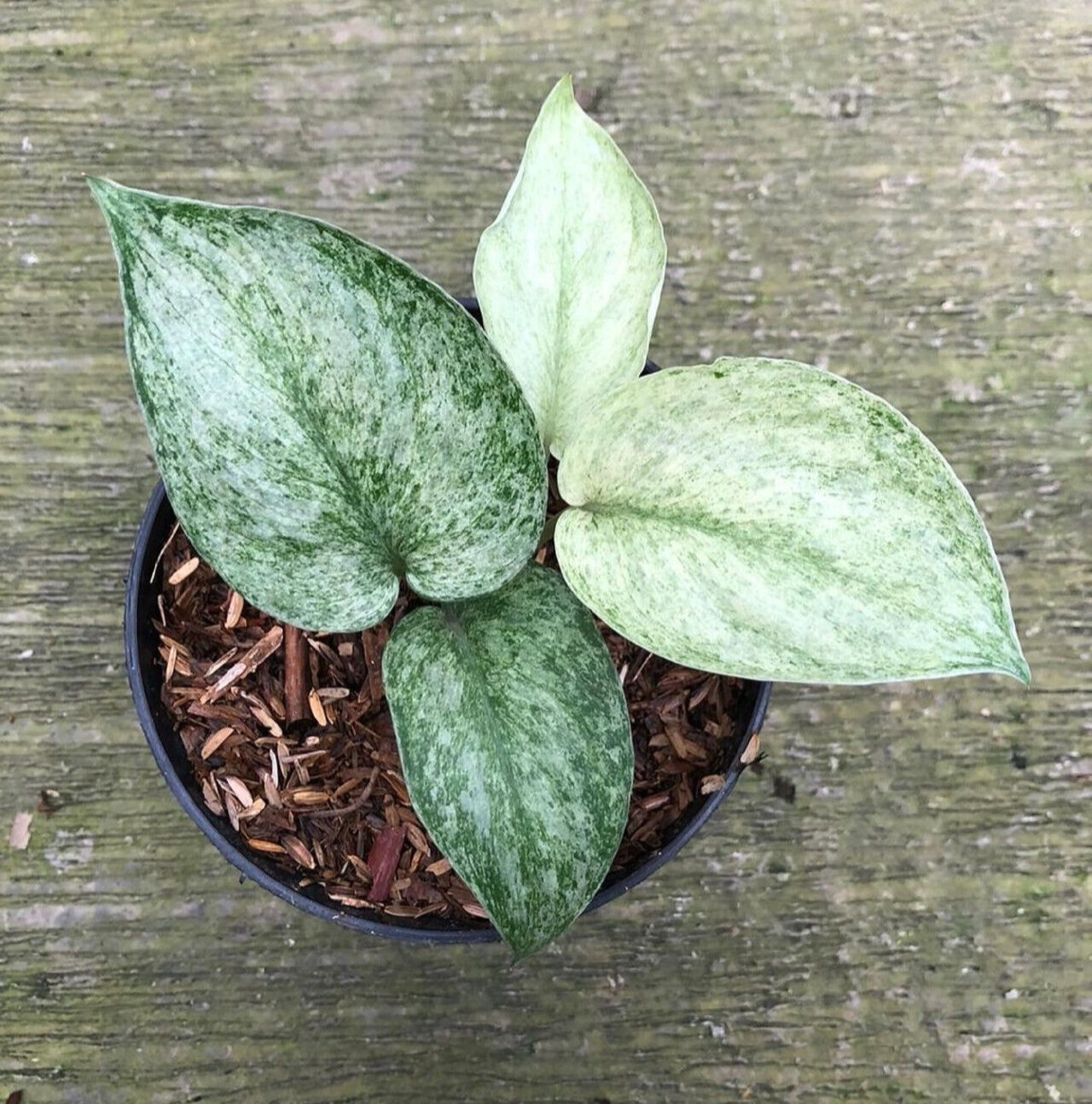
“Discover the Luminous Beauty of Scindapsus mint! Click here to bring this enchanting plant into your home today.”
Water When Top Inch of Soil is Dry
Check Soil Moisture
Satin pothos plants are quite susceptible to root rot if overwatered, so only provide water when the top inch of soil becomes dry to the touch. Use your finger to test moisture levels before adding any more water. The soil should not be soggy or stay wet for prolonged periods.
Allow Soil to Completely Dry Out
That said, you also don’t want the soil to completely dry out between waterings. Allow the top section of soil to dry out, but don’t wait until the entire container is bone dry or the plant will start to wilt. Aim to keep the soil consistently moist but not wet.
Understanding the watering needs of Scindapsus can be tricky. For more in-depth advice on how to perfectly balance moisture levels for these plants, the guide “How to Grow Scindapsus in 5 Easy Steps“ is an excellent resource.
Increase Humidity
The Scindapsus mint appreciates average to high humidity levels similar to the tropical environments where it naturally grows. In the home, dry air from winter heating systems or air conditioners in summer can dehydrate the plant. Boost moisture levels around your trailing pothos by placing it on a pebble tray filled with water or misting it daily. You can also group plants together to create a humid microclimate.
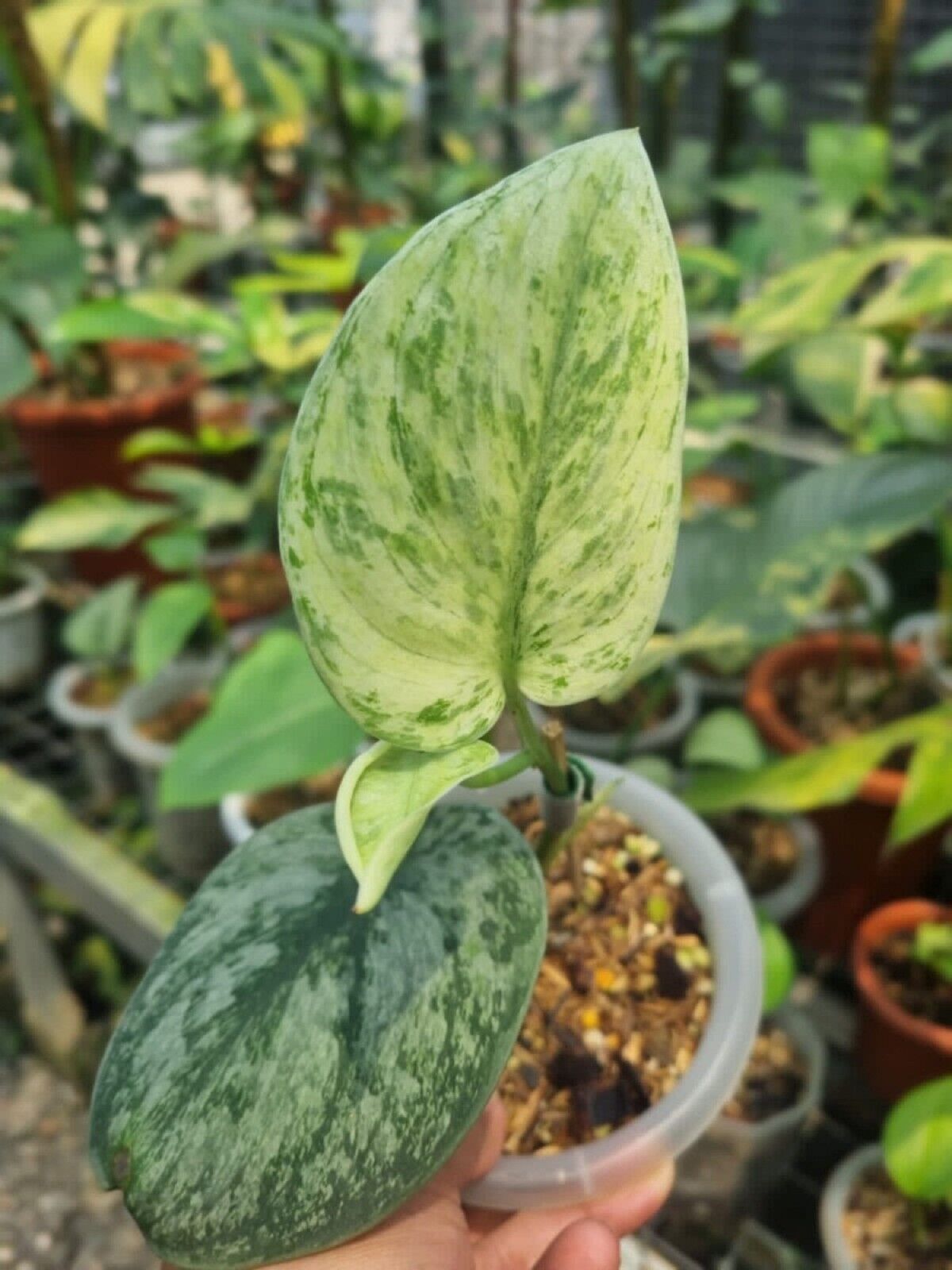
Fertilize in the Growing Season
Use Balanced Liquid Fertilizer
To keep your Scindapsus mint lush and vibrant, fertilize it with a balanced liquid houseplant fertilizer diluted to half strength. Only apply fertilizer during the active growing period from spring through summer. Fertilize once a month.
Avoid Fertilizing in Fall and Winter
As growth slows for the season, stop feeding the plant. Fertilizing during the plant’s period of winter dormancy can damage the roots and cause leaf burn. Wait until signs of new growth emerge in spring before resuming fertilizer.
The nuances of fertilizing Scindapsus, including the type of fertilizer and frequency, are well-covered in “Are you growing scindapsus at home? Find out its 5 secret advantages!“. This article offers valuable insights into maintaining the health and vibrancy of your Scindapsus through proper nutrition.
Where to buy Scindapsus mint? Benefits from importing plants from Thailand
- Shipping: Door to door shipping, fast and safe with Dragon Courier
- Biodiversity: Thailand is known for its rich biodiversity, including a wide variety of aroid species. This diversity allows importers to access a broad range of unique and exotic aroid plants.
- Quality and Health of Plants: The suitable climate helps the plants grown here stay healthy and of high quality.
- Cost-Effectiveness: Due to favorable growing conditions and efficient production methods, Thai aroid plants can often be more cost-effective compared to those from other countries.
- Access to Hybrid Varieties: Thai growers are often involved in the development of new hybrid aroid varieties, offering unique plants that may not be available from other sources.
Scindapsus species are the most sought after by aroid plant lovers
Conclusion
The gorgeous silver-green satin pothos, or Scindapsus mint, makes a fantastic hanging plant or trailing vine to brighten up indoor spaces. Place this easy-to-grow houseplant in a spot with plenty of indirect sunlight and water when the top inch of soil dries out. Use a well-draining potting mix, increase humidity, and fertilize monthly during the growing season for lush growth. Follow these five tips to help your beautiful Scindapsus mint plant thrive.
- What is Scindapsus Mint?
- “Scindapsus Mint is a variety of Scindapsus, a genus of flowering plants in the family Araceae. It is known for its attractive foliage with a unique minty-green hue, making it a popular choice for indoor plant enthusiasts.”
- How do I care for my Scindapsus Mint plant?
- “Caring for Scindapsus Mint involves providing it with moderate to bright indirect light, watering when the top inch of soil feels dry, and maintaining a consistent room temperature. It’s important to avoid overwatering and to provide well-draining soil to prevent root rot.”
- Can Scindapsus Mint thrive in low light conditions?
- “Scindapsus Mint can tolerate low light conditions, but its growth may be slower, and the vibrant color of its leaves may diminish. It’s ideal to provide bright, indirect light for optimal growth and foliage color.”
- Is Scindapsus Mint toxic to pets?
- “Yes, Scindapsus Mint, like other Scindapsus species, is toxic to pets if ingested. It’s recommended to keep the plant out of reach of pets and to seek veterinary care immediately if you suspect your pet has ingested any part of the plant.”
- How often should I repot my Scindapsus Mint plant?
- “Repotting Scindapsus Mint is typically necessary every 1-2 years or when the plant becomes root-bound. Choose a pot that is slightly larger than the current one and use fresh, well-draining potting mix to encourage healthy growth.”

